As we progress through 2025, employers and employees are navigating what some industry experts are calling “The Great Benefits Reset.” Economic changes, shifting workforce expectations, and updates in healthcare policies are driving organizations to rethink their benefits strategies, especially regarding health benefit accounts. It is more important than ever for HR leaders and employees to understand these options to make the most of their healthcare investments.
The Driving Forces Behind the Benefits Reset
Economic Pressures and Healthcare Inflation
With healthcare costs continuing to rise faster than general inflation, employers are looking for innovative ways to manage expenses while continuing to offer valuable benefits. In 2025, the average employer-sponsored health plan experienced a premium increase of 7.2%, prompting many organizations to reevaluate their health benefit account structures.
This challenge is heightened by broader economic uncertainty, as many organizations are experiencing margin compression and increased scrutiny of all expenditures. Healthcare benefits, typically the second-largest expense after wages, have become a key area for financial optimization. Cost-sharing strategies through thoughtfully designed benefit accounts are increasingly viewed as essential rather than optional.
Workforce Expectations and the War for Talent
Today’s multi-generational workforce presents diverse healthcare needs and financial priorities, adding complexity to benefits planning. The ongoing tight labor market has elevated benefits from a supplementary offering to a crucial factor in talent acquisition and retention strategies.
Recent workforce surveys show that 68% of employees now consider health benefits a top-three factor in job selection, an increase from 54% just three years ago. Additionally, 73% of employees are interested in personalized benefit options that allow them to allocate resources according to specific needs.
Generation Z and Millennials, expected to make up nearly 65% of the workforce by the end of 2025, place high value on benefits flexibility and digital-first access. In contrast, Gen X employees often focus on dependent coverage options and retirement health planning. This variety of needs is driving a shift towards more adaptable account structures.
Regulatory Evolution and Compliance Challenges
The regulatory landscape for health benefit accounts has seen substantial changes. Recent policy updates, particularly several provisions of the SECURE 2.0 Act that became effective in January 2025, have broadened the opportunities for integrating retirement and healthcare benefits. However, these changes have also introduced new compliance requirements.
Modifications to the tax code have presented both opportunities and challenges. The expansion of qualified medical expenses, adjusted contribution limits, and new options for integrating retirement planning have paved the way for innovative benefit structures. At the same time, increased reporting requirements and fiduciary responsibilities have added administrative complexities.
A diverse array of regulations has developed at the state level, with 17 states implementing state-specific requirements for certain health benefit accounts. This inconsistency poses significant challenges for multi-state employers who must navigate varying regulatory environments.
Technological Transformation
The digital transformation in healthcare is significantly changing health benefit accounts. Artificial intelligence and machine learning are enhancing how employees choose, fund, and manage their benefit accounts. Predictive analytics now provide tailored recommendations for contribution amounts and investment options based on individual health profiles and financial objectives.
Mobile-first platforms have become the norm, with over 80% of benefit account interactions now taking place on smartphones. This trend has raised expectations for seamless user experiences, real-time fund access, and integrated decision support tools. Traditional benefit account structures that lack comprehensive digital engagement are increasingly seen as outdated.
Holistic Wellness Integration
A key factor influencing the Great Benefits Reset is the ongoing integration of physical health, mental wellbeing, and financial wellness. Organizations are increasingly acknowledging the interconnectedness of these elements, prompting more comprehensive approaches to benefit account design.
Since 2023, mental health spending has risen by 43%, leading to a demand for broader eligibility of expenses within various benefit accounts. Additionally, financial wellness programs have become more commonplace, with a majority of large employers now offering some form of financial education or support. This holistic perspective is transforming the structure and communication of benefit accounts.
Strategic Considerations for Employers
Conducting a Benefits Audit
The first step in addressing the Great Benefits Reset is to carry out a thorough audit of current offerings. This should encompass:
- Analyzing utilization rates across all existing health benefit accounts
- Assessing administrative costs and user experience
- Evaluating how accounts correspond with workforce demographics
- Benchmarking against industry competitors
Communication is Essential
Even the best-designed health benefit account strategy can fall short without effective communication. Successful employers are:
- Implementing year-round education campaigns instead of focusing solely on open enrollment
- Utilizing personalized decision support tools
- Creating clear comparison resources for employees to evaluate their options
- Providing virtual benefits consultations
The Great Benefits Reset of 2025 presents both challenges and opportunities. As economic, workforce, regulatory, technological, and wellness factors continue to evolve, organizations must approach health benefit accounts with a renewed strategic focus. Those who successfully navigate this changing landscape will create significant value for both their organizations and employees.
DataPath is a leading innovator in the employee benefits, financial services, and insurance sectors. Our flagship benefits platform provides a comprehensive solution for managing CDH, HSA, Well-Being, COBRA, and Billing. In addition, we offer expert BPO services, contact center solutions, and award-winning marketing services.

